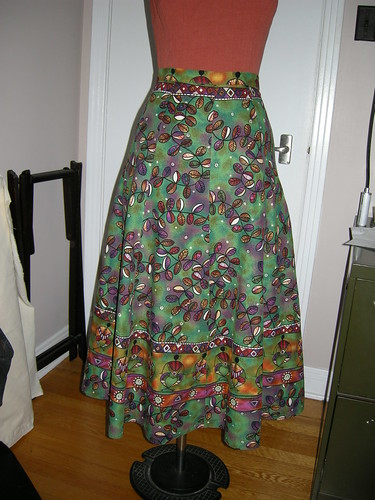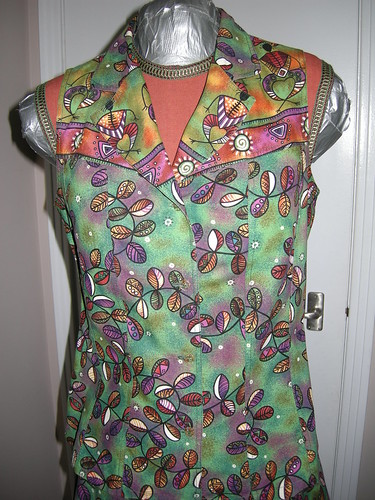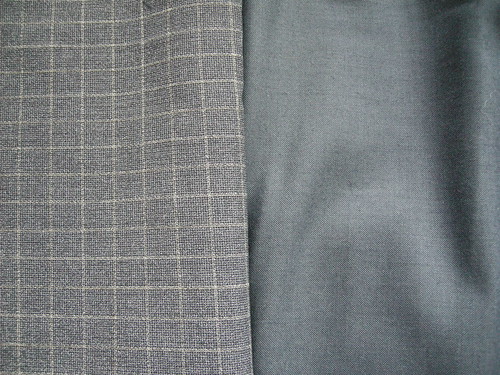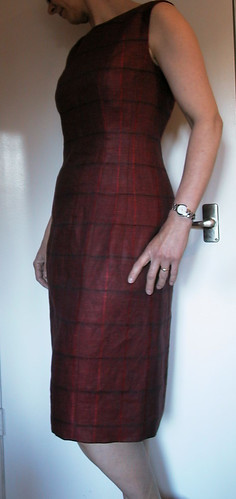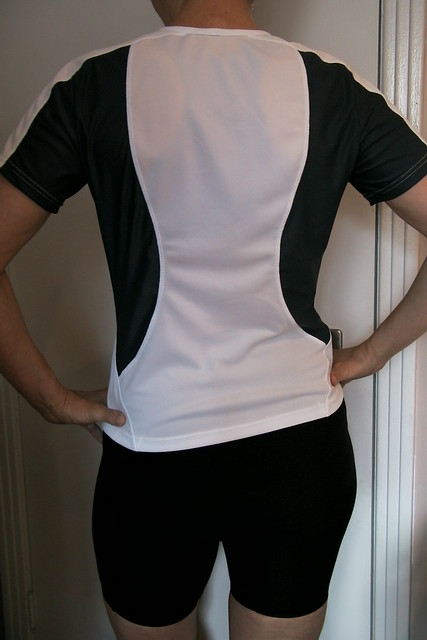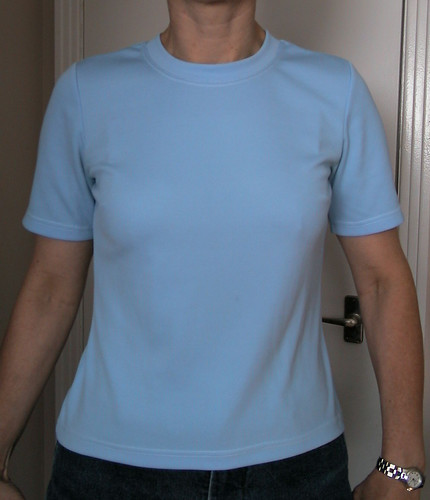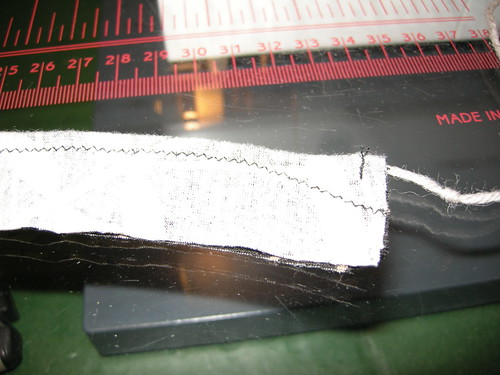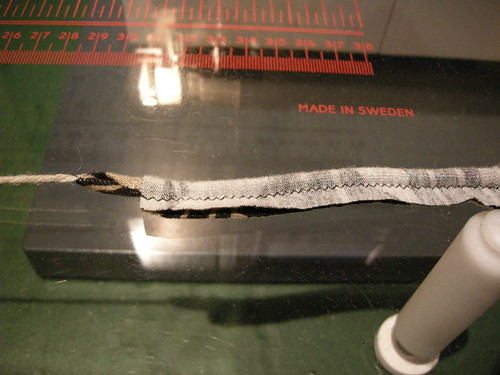There are so many lovely border prints out there; and seemingly so few patterns that suit them. Conventional wisdom says you need straight lines which would seem to eliminate many interesting designs such as flared skirts and shaped blouses. Wrong!! Here are two projects to illustrate.
First, my laundry for today. Some years back, I used a cotton print with 2 different borders to make a shapely 8-gored flared skirt and matching shirt with front and back yokes and princess seaming.
The print featured quirky vines through the middle of the fabric, and a border at each selvedge with stylized figures and narrower design bands at the top and bottom of the figures. I cut my 8 gores using the full band at the bottom, and it so happened that I could use one of the narrow bands at the top of the skirt pieces. Obviously this meant I had to cut the pieces "sideways" on the cross grain. If I recall, the border was the same at both sides, so I could place the triangular pattern pieces very economically using both edges.
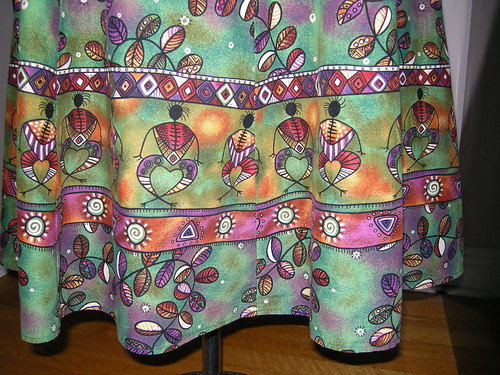 Here's a close up of the hem. You can see one seam in about the middle of the picture - I tried as much as possible to cut so that the figures would not be chopped up by the seams. While each pattern piece has a slight curve at the hem and the border is (more or less) straight, the overall effect is a printed border that tracks the curving hem line perfectly.
Here's a close up of the hem. You can see one seam in about the middle of the picture - I tried as much as possible to cut so that the figures would not be chopped up by the seams. While each pattern piece has a slight curve at the hem and the border is (more or less) straight, the overall effect is a printed border that tracks the curving hem line perfectly. What about the shirt? I used a Burda magazine pattern from the late 1990s (I think). It features a front and back yoke (front is slightly angled down from the armscye to CF), princess seams, and a collar with lapel.
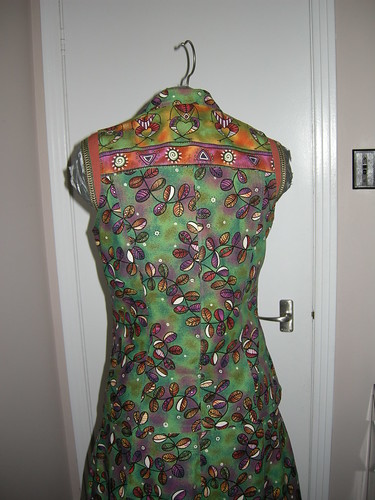 As you can see, I cut the yoke pieces so that the border tracks the yoke edge. This meant I had to ignore the grain line on the pattern pieces. It is possible to do this without causing the world to come to an end! I did the same in the back, but could respect the straight grain for the back yoke, which is horizontal.
As you can see, I cut the yoke pieces so that the border tracks the yoke edge. This meant I had to ignore the grain line on the pattern pieces. It is possible to do this without causing the world to come to an end! I did the same in the back, but could respect the straight grain for the back yoke, which is horizontal. Here's another project using a border print in an interesting way. I was lucky enough to have a silk sari which had two different border prints - a wide one at one selvedge (meant to be the hem) and a narrow one at the other. I used a Vogue pattern (8193, now OOP) which features large puffed sleeves and a triangular shawl collar.
I used the wide border for the sleeves and the narrow border at the CF and collar edges, and for the sleeve cuffs. Again, this meant I had to selectively ignore the grain lines on the pattern pieces (especially for the upper collar - I also had to create a CB seam).
The sleeves involved a little trick - the lower edge of the pattern piece is not perfectly straight but the selvedge is. I started by laying the piece on the fabric (cross-grain) so that the bottom of the curve included the entire border. I then cut the piece except at the lower edge where I wanted to preserve the border and selvedge. To create approximately the right curve, I took a long, narrow dart parallel to the selvedge, between the lower edge of the border and the leafy design as you can see in the next (sideways) picture... or can you?

The only hint is that the lower edge of the leafy design is being swallowed up a little bit by the red border, near the under-arm seams. Once I had sewn and gathered the sleeves, this was completely invisible. On the other hand, if I had cut the curved lower edge, the drooping border might have been visibly distracting.
These fudging, fast-and-loose techniques might not work for all border prints or all fabrics. Darting the blouse sleeve worked very well with my thin silk fabric - as you can see, the dart pressed perfectly flat (although a slight shaping would have been unnoticeable). Also, both my prints were quite "freehand" - the lack of precise geometrics in both prints meant that the slightly approximate matching and shaping wasn't fighting with the aesthetic of the print.
Here's hoping this may inspire you to think outside the box with those border prints that you love but can't figure out how to use...
